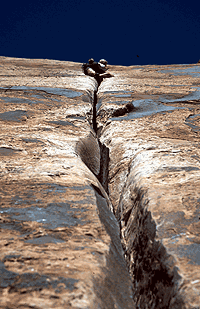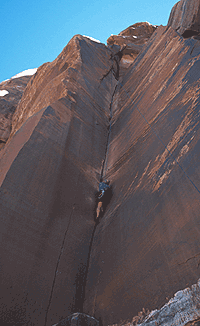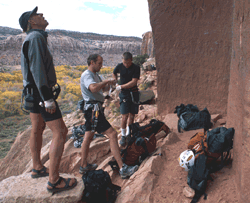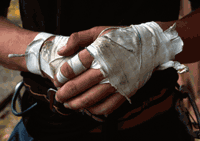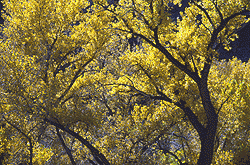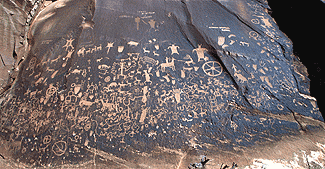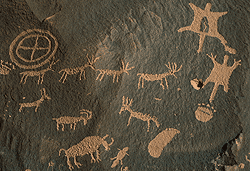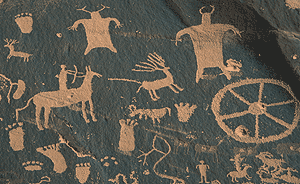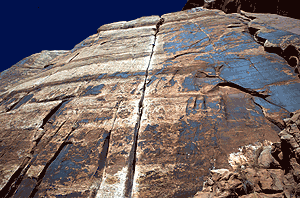
| Can you see Bruce in the picture on the left? He is about three-fourths up the large center crack with his arm stretch out to the left. |
| The photo on the right is what Bruce would look like If you had a pair of binoculars.
Now can you find him on the photo to the left? The route Bruce is on is called Generic Crack. |
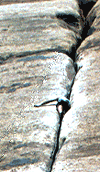 |
